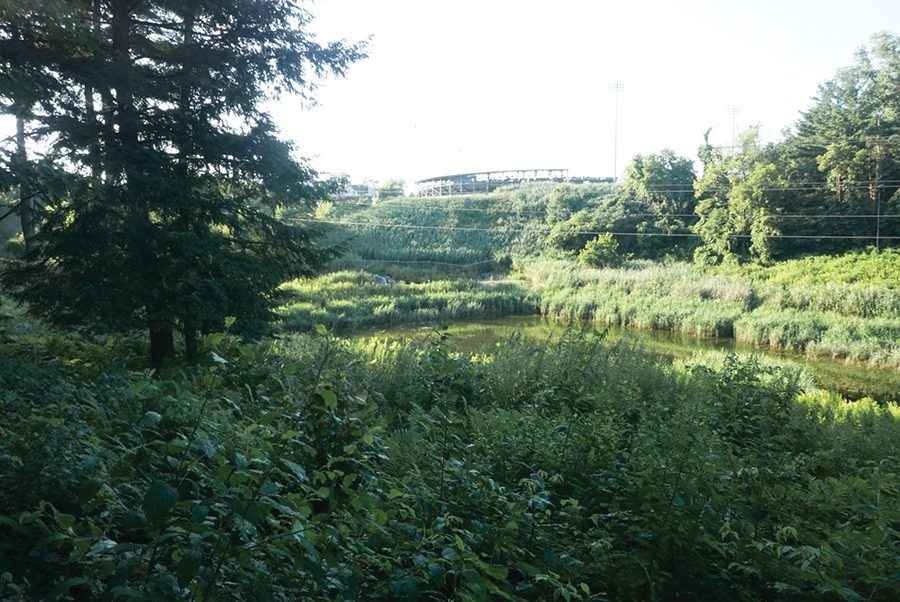Near and far: trails to try this fall
Centennial Woods, located just across from the medical center and behind Centennial Field, has many trails that are perfect for running, walking, and birding.
September 28, 2018
Views for miles in all directions, a new perspective, a greater appreciation for life and a good workout all come from summiting one of the many mountains within an hour’s drive from UVM.
Whether it’s a leisurely walk for a picnic, a great view of the lake or a physical challenge, Vermont has it all.
Mount Philo
One of the most popular and accessible mountains in the area is Mount Philo. It is a 20-minute drive or a 60-minute bike ride away.
After a quick 30-minute walk to the summit, there are picnic tables, campsites, Adirondack chairs and a breathtaking view of Lake Champlain.
Mount Philo is great for parents, dogs and anyone looking for a killer picnic.
Find out when sunset is, grab a Tupperware and bring your favorite meal up Philo for an unmatched sunset supper.
Camel’s Hump
One stand-out mountain with a unique shape is Camel’s Hump. Its profile is recognizable all over the state.
The Burrows trail is 45 minutes from campus and offers a three-mile hike to the summit.
The mountain’s constant uphill gets the blood pumping and the scenery sparks the imagination. Play word games with friends or admire the surrounding nature all the way up to the summit.
While you climb, keep an eye out for the subtle changes in tree types and sizes as you approach the summit.
At about 2,500 feet in elevation the forest will change from mostly broad-leafed trees like maple, beech and birch to mostly conifers like spruce and fir. This change happens on all mountains but the elevation differs based on latitude.
Continue up a couple hundred more feet and the trees will shrink until they more closely resemble shrubs.
Just a small amount farther and the trees disappear almost entirely. Now you are on the summit and in the alpine zone.
There are sensitive tundra plants at the summit like cushion plants and mountain sandwort, according to Rick Paradise, former director of UVM’s natural areas, in a 2007 New York Times article.
These plants are rare in New England because there are only small pockets of alpine tundra on the peaks of the tallest mountains.
In good weather, one has a terrific view of Vermont. In bad weather, harsh winds and dark clouds buffet and block hikers. Both outcomes are an epic example of the wilds of Vermont.
The hike takes a couple of hours to complete. Solid shoes, two liters of water and a snack are all necessities.
Bring an extra layer because the temperatures drop and winds pick up above the treeline.
On the way back to campus, treat yourself to a pastry, gluten-free granola bar or a coffee at Sweet Simone’s, a local cafe in Richmond.
Centennial Woods
For those without a bike or a car, Centennial Woods is a break from classrooms and buildings on campus.
Located just across from the medical center and behind Centennial Field, the area has many loops and trails that are great for running, walking, birding and enjoying a mixed hardwood forest.
A surprising amount of wildlife can be found there, from barred owls and cooper’s hawks to beavers and foxes.
Take a walk down early in the morning or between classes and experience what one of UVM’s natural areas has to offer.
Vermont’s natural world is no more than a short trip away. Get some water, grab a friend and get out there.







